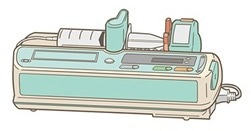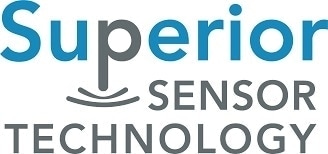Automated drug delivery systems have the potential to greatly enhance the safety and precision of medication administration, especially in high-risk medical environments like critical care. This process involves the administration of medication to a patient by an automated system.
A few examples of automated drug delivery systems include:
Intravenous (IV) medication
The administration of intravenous (IV) medications is a common practice in critical care settings. To reduce the risk of medication errors and adverse effects, automated drug delivery systems are frequently utilized. These systems can accurately deliver a specified amount of medication over a defined period, ensuring a precise drug infusion process.
Patient-controlled analgesia (PCA)
PCA is an effective pain management method. In this approach, patients self-administer pain medication through an automated pump that is programmed to deliver a specific dose when the patient presses a button. PCA allows patients to control their pain management while minimizing the risk of overdose or other complications.
Anesthesia
The use of automated drug delivery systems is also common in anesthesia during surgical procedures. These systems are programmed to deliver precise doses of medication at specific intervals to maintain the patient’s anesthesia state safely and effectively.
Chemotherapy
Chemotherapy is often administered using automated drug delivery systems. This approach ensures precise dosage delivery over a defined period, which helps to reduce the risk of side effects and complications.
Insulin pumps
Automated insulin pumps are commonly used in the management of diabetes. These devices continuously deliver insulin to the patient’s body, with the dosage adjusted based on the patient’s blood glucose levels. The use of automated insulin pumps can help patients achieve better glycemic control and reduce the risk of complications associated with diabetes.
Neonatal care
Automated drug delivery systems are employed to administer medications to premature infants. These systems can deliver precise doses of medication, which is critical in the care of fragile newborns.

Image Credit: Superior Sensor Technology
Automated delivery systems also have the potential to administer intravenous rehydration, a process where fluids are directly provided to a patient’s bloodstream for rapid hydration.
How the system works
Automated drug delivery systems are commonly used with liquid medication and work as follows:
- The stored medication is connected to an infusion pump which is designed to deliver a precise amount of the medication over a specified period.
- An automated system is used to program the pump with the necessary dosage and timing parameters. The computerized system may also monitor the patient’s condition and make necessary adjustments to the dosage.
- The medication is administered directly to the patient through the infusion pump.
- The automated delivery system constantly monitors the patient and makes necessary dosage adjustments as required.
- The system may also include safety features such as alarms and alerts to notify healthcare providers of any potential complications or irregularities.
The role pressure sensors play in automated drug infusion systems
Automated drug delivery systems rely heavily on pressure sensors, as they provide vital feedback to ensure the safe and accurate delivery of drugs into a patient’s body.
The bullet points below outline how pressure sensors work in automated drug infusion systems:
- These sensors are positioned downstream from the pump, within the infusion line, and are responsible for monitoring the drug’s pressure as it flows through the line.
- The pressure sensor continuously relays this information to a control unit, which analyzes the signals and adjusts the pump’s flow rate accordingly to maintain the desired medication delivery rate.
- The control unit can be programmed to respond to changes in the patient’s condition, such as alterations in blood pressure or heart rate, to ensure that the drug is delivered at the correct rate and pressure. This feedback mechanism enhances the safety and precision of the drug infusion process.
- The pressure sensor can even trigger an alarm or stop the infusion if any irregularities are detected, preventing potential harm to the patient.
The incorporation of pressure sensors into drug infusion systems can enhance the precision and safety of the drug delivery process. By providing continuous feedback to a control unit, pressure sensors enable the automation of drug infusion, reducing the risk of human error and improving the efficiency of healthcare delivery.
Superior Sensor Technology’s pressure sensors for drug infusion systems
Superior has developed a proprietary platform called NimbleSenseTM, which is the industry’s first system-in-a-sensor integrated architecture.
This architecture provides high precision and dependability while also offering specific features tailored to each application. By utilizing an advanced pressure sensing system and the ability to integrate optional building blocks, NimbleSenseTM can deliver unique solutions that are well-suited for automated drug delivery systems.
The ND Series, with its distinctive feature set and capabilities, offers numerous benefits that make it an ideal choice for such systems.
ND Series
The compensated operating temperature range of the ND Series has been expanded to cover temperatures from -20 °C to 85 °C. Additionally, the ND Series boasts a quick response time of 2.25 milliseconds, as well as the ability to choose from a variety of bandwidth filters.
The sensors in the ND line can detect low-pressure differentials ranging from ±0.25 inH2O (±62.5 Pa) to high-pressure differentials of up to ±30 inH2O (±7.5 kPa).
Key features of the low-pressure differential sensors include:
- Multi-Range technology that allows one device to support up to 7 calibrated pressure ranges
- Selectable bandwidth filter from 1 to 200 Hz
- Exceptional zero stability
- Extremely high accuracy within 0.05% of the selected range
- 16-bit resolution (each selected range)
- Total error band less than 0.15% FSS
The ND Series simplifies design efforts by integrating a piezoresistive sensing element with amplification, ADC, DSP, and digital interface. The incorporation of advanced digital processing enables the realization of new functionalities that streamline system development and manufacturing, resulting in increased product reliability.
Beyond serving as a pressure sensor, the ND Series functions as a pressure sensing sub-system, equipped with optional integrated closed-loop control, advanced digital filtering, and a 3-mode pressure switch.
About Superior Sensor Technology
Superior Sensor Technology is an innovative, high technology company is revolutionizing the high performance, cost driven pressure sensor market by developing integrative, highly intelligent solutions for industrial, HVAC and medical applications.
Our proprietary pressure sensor technology with advanced programmable software features enables customers to develop higher performing, more reliable equipment.
Sponsored Content Policy: News-Medical.net publishes articles and related content that may be derived from sources where we have existing commercial relationships, provided such content adds value to the core editorial ethos of News-Medical.Net which is to educate and inform site visitors interested in medical research, science, medical devices and treatments.